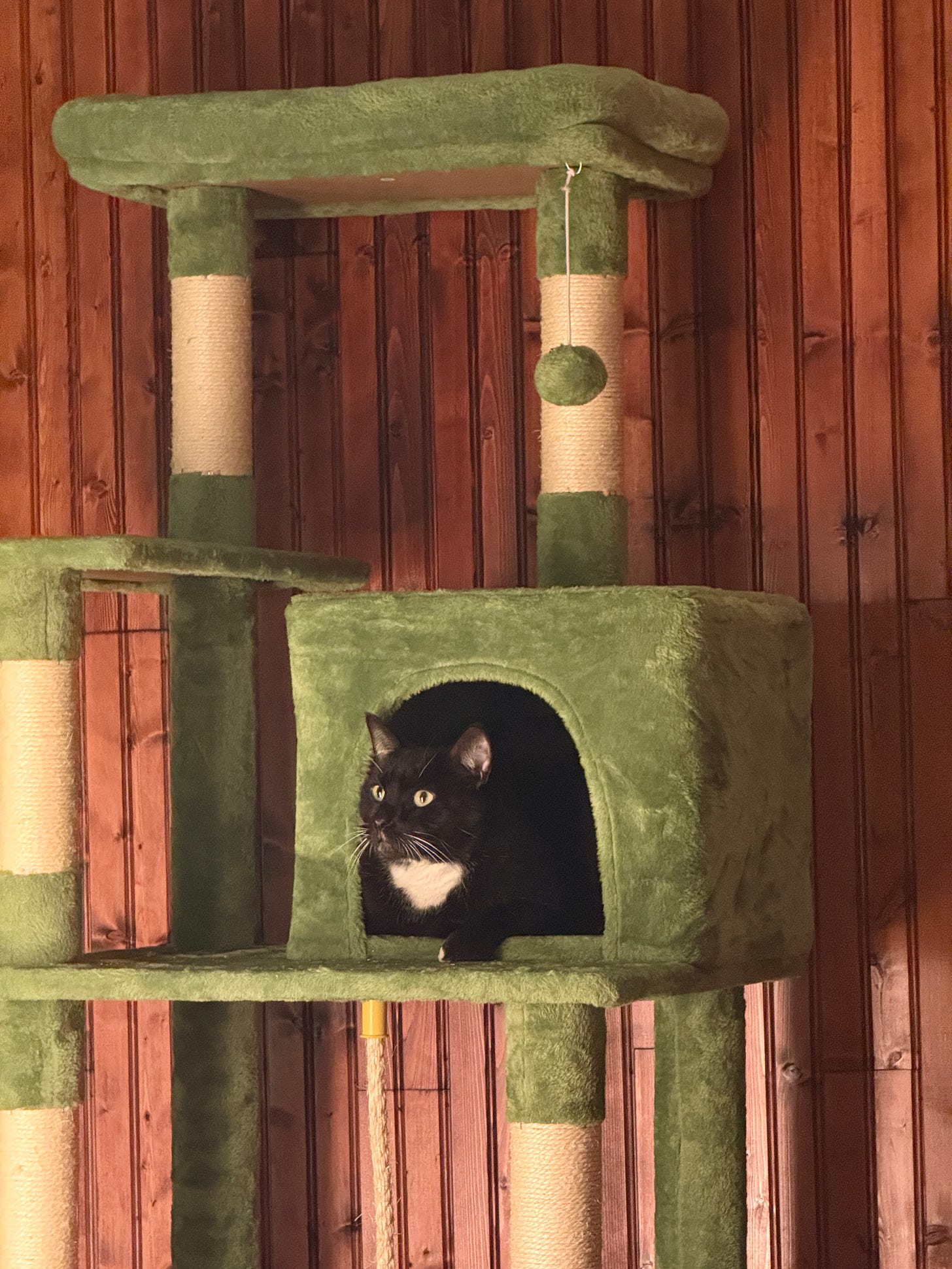Small wins (Part 1)
This is Western Coffee—notes on building the creative body. Last time: Click. The whole series is here. Please share this email; you can sign up free below.
Creativity and athletics: It’s an old premise of this newsletter that these two domains intersect in a whole range of ways—not least in the (good) physiological effects of exercise on mood and cognitive function.
I’ve been thinking about another way creativity benefits from physical training, which I’m going to refer to as the small win. Movement offers a number of concrete, linear analogs to the more amorphous work of a creative project, because any formal athletic competition has obvious predicates in the specific type and number of workouts, the program of rest and nutrition, the playlist selection, etc., that preceded it—and conversely, to reach an athletic goal is to plan and fulfill a set of intermediary steps, a blunt and intuitive progression. Small wins occur all over a training process; they might not be as plain in creative work, but they’re there. Athletics offers some clues about how to find and grasp and use them.
In whatever domain, the small win is the thing you manage to do that is not the thing you’re doing, but—by intention or not—a step toward it, or even a scale-model proof that it’s possible. Some days victory is overcoming the mental block sitting between you and the gym, or a jog in the rain. Some days it’s remembering to eat enough carbs a couple of hours before a long run, or successfully rehydrating yourself afterward.
The most obvious (not to say valuable, per se) small wins for me are quantitative: I set out to do a minimum-effort run and end up beating my usual recovery pace by 1’00”/mile without meaning to, or I place high on the leaderboard in a Peloton class, or the swimming class teacher assigns me to the fast lane. These are all echoes of what victory will look like in the larger project—crossing the finish line at a race. They presage high accomplishment; they help to justify the expense of the present effort. They serve as evidence that the training is doing its job.
In my work as a writer, the “A race”—the anchor of my season, the event where I really want to shine—is finishing a novel about Joseph Smith and the origin of Mormonism. In the most evolved version of my plan, it will be about 400 pages, and thus far from comprehensive. (I’ve written that much a few times over now, by the way, but writing is rewriting and all that.) My aim isn’t to take an exhaustively documented life and give it some relatable color, a la much historical fiction, or even to raise up something of more mythical scale from the written record (which is part of what the exquisite Madeline Miller does). No, I’m trying to recover the emotional truth that I think has gotten lost in the archives and the scholarship and certainly the institutional mythologizing. I don’t want you to know what kind of hammer you used to make a nail for a horseshoe in 1831. I want you—you, a contemporary person of reason—to know what it felt like to believe you’d just met the mouthpiece of God, and leave your home forever to follow him. And then to discover the reality of who he was, and have to decide what to do next.
Recently, I’ve registered a few small wins. I stumbled into a book by the (dazzling, soulful, brilliant) Mormon historian D. Michael Quinn that I’d hoped I could dodge, on the evolution of authority and hierarchy in the early church. Quinn was the one who turned me on to the role of folk magic and other occult ritual and belief in the lives of Joseph Smith’s family and others around them, which ended up being a shift of paradigm for the whole novel, and I’ve also been thinking about that book as I fall into the rabbit hole of the uncategorizeable academic Jeffrey Kripal, whose new book “How to Think Impossibly” is renegotiating (among many other things) my whole theory not only of what Smith and those around him experienced but of its relationship to core reality.
It’s also a recent development that I’ve felt myself really connecting in the yoga class I teach—finding what I’d call, with at least some students, a vibe, a slight departure from the ordinary terms of our everyday experience. Convening a room full of people for a meditative practice has taken my mind, a little tangentially, to the nature of charisma—presence, power, warmth, as it’s often formulated. I’m living the experience, so central to the narrative I’m writing, of standing in a room of strangers and trying to speak to something deep inside them. This is, for its context in the yoga studio, not a rare experience, but it’s one I didn’t have as an adult until this year. A building block.
And then there’s this newsletter, which from time to time I learn is resonating deeply with someone somewhere—someone I know, or just as often not. This is where I work on craft, and for its many failures there have been some successes. Places where the writing process itself built the idea and gave it emotional resonance.
OK, this is long. I’ll have to pick up the topic again to finish the thought, because it’s important—not just that small wins happen in different disciplines, hooray, but that between the creative and athletic domains they more than merely coincide. They overlap, they coextend, they influence each other, they give rise. One kind is fuel for the other. So, more on that point soon.
Kindly send me your thoughts, questions, and provocations: dmichaelowen@gmail.com. And say hi on Instagram.

